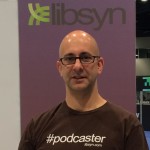
On the eve of this year’s Podcast Movement in Philadelphia, we wanted to focus your attention on the subject at hand. While many in the podcasting space are justifiably concerned about ideation, production, and execution of their audio masterpieces, distribution and promotions are challenging to many. How to get the word out about your podcast – that IS the question.
To help get our brains engaged, our Digital Dot Connector, Seth Resler, queried some of the best and brightest in the broadcasting and podcasting space. Can they agree or are there as many solutions as there are experts? Read on. And we’ll see you at Podcast Movement. – Fred
The first big challenge that every podcaster faces is growing their audience. How do you encourage people to listen to your podcast? How do you let  them know about your podcast? Where’s the best place to reach them?
them know about your podcast? Where’s the best place to reach them?
But the truth is, even if I had a large budget to spend on marketing a podcast, I’m not sure where I would spend the money. So I sought the advice of a number of luminaries in the podcasting space. Here’s what they suggested… -Seth

The best place to promote any content is on the same media platform. Spend your $100,000 budget – all of it – by advertising your new podcast on other podcasts.
Some podcast studios build cross-promotion into their agreements with content providers, but realize that it’s not free and may not be targeted correctly. To use a radio analogy, you wouldn’t run promos for a hip-hop station on a country station just because they’re co-owned. Instead, take control of your budget, study the data, and – like all good advertising – reach the right audience with frequency.
You’ll notice that the smart people at Trader Joe’s have underwritten the podcast edition of NPR’s Wait Wait… Don’t Tell Me! to raise awareness of Inside Trader Joe’s. That’s a perfect fit.
—Dave Beasing
Founder, Sound That Brands
 Assuming it’s a podcast about widgets in Nowheresville, I’d focus on highly targeted advertising to widget consumers in Nowheresville. That could be on Facebook, but it could just as easily be on billboards, the radio, or other offline things. The recent New York Times marketing is the right kind of thing.
Assuming it’s a podcast about widgets in Nowheresville, I’d focus on highly targeted advertising to widget consumers in Nowheresville. That could be on Facebook, but it could just as easily be on billboards, the radio, or other offline things. The recent New York Times marketing is the right kind of thing.
I’d make a nice website which, among other things, is really good at explaining what a podcast is. The only call-to-action on the advertising would be to take people to the podcast’s website. From there, there would be just two links – Google Podcasts and Apple Podcasts – since they’re the pre-installed podcast apps on each platform; and the name of the podcast would be really obvious for those power users who have installed something different.
The “right” place to advertise isn’t to podcast listeners. It’s to people interested in widgets in Nowheresville. Jacobs Media’s research already says that most people don’t know why they should bother listening to a podcast; so the best method to get them listening is to tell them why.
—James Cridland
Editor, Podnews.net
 I would hire or create a tight-knit, creative audience development team solely focused on community building and outreach.
I would hire or create a tight-knit, creative audience development team solely focused on community building and outreach.
Develop a strategy for incorporating audience feedback, interaction, and management. Teach the podcast audience how to reach you (the podcast host/team) directly and create dialogue and culture around your podcast. Some questions to consider:
- How will they reach the show? Phone number, email address, hashtag, social media private & direct messages
- Who is going to manage the conversation? Gather audio feedback? Incorporate into the show?
- In what way can the audience share the show? Is it clear to them what they need to do to share how much they love and support the podcast?
I would also pursue outside-the-box marketing focusing on audience psychographics and behavior, such as:
- Developing one to three specific listener avatars
- Forming partnerships with existing brick and mortar local (if appropriate) and national brands, franchises, and organizations. (For example, even if the podcast is not directly about health and fitness, is the perfect listener interested in making healthy choices in food, thought and behavior Then reach out to yoga studios, natural food markets, juice bars, etc.)
- Creating clear, simple and accessible ‘how to listen to a podcast’ digital campaigns native to social media channels.
Bottom line, it’s all about creating a culture around consuming and participating in the show. Podcasting is an embodied experience and creating habits embedded in listener’s lives will create triggers for them to engage, listen and share.
–Elsie Escobar
Co-founder, She Podcasts and Co-host, Libsyn’s The Feed Podcast
 The easiest audience to reach, and the audience that is most enriched for people who will try your podcast, is people who already listen to other podcasts. So if I had $100,000, I’d spend most of it trying to get an entire episode of my new podcast on the feed of the biggest most relevant podcast I could find. Think of how the first episode of Serial was on the This American Life feed, and most recently, how the first episode of Everything Is Alive was on the 99% Invisible feed. Assuming you have great content, that’s one heck of a boost out of the gate. Interestingly, I don’t believe those two placements were paid. They were based on existing relationships and partnerships, and I’ve also seen such deals based on swaps.
The easiest audience to reach, and the audience that is most enriched for people who will try your podcast, is people who already listen to other podcasts. So if I had $100,000, I’d spend most of it trying to get an entire episode of my new podcast on the feed of the biggest most relevant podcast I could find. Think of how the first episode of Serial was on the This American Life feed, and most recently, how the first episode of Everything Is Alive was on the 99% Invisible feed. Assuming you have great content, that’s one heck of a boost out of the gate. Interestingly, I don’t believe those two placements were paid. They were based on existing relationships and partnerships, and I’ve also seen such deals based on swaps.
Therefore, I’d think about spending money on a business development person with good connections who could build relationships with the biggest podcasters and networks. If I couldn’t get a full episode of my podcast on another show, I’d have my business development person try to get promos on other top podcasts, and if that failed, I’d buy ads for my podcast on other top shows. I’d also think about hiring a PR person or PR firm to make sure my new podcast got included in as many buzzy media podcasting lists as possible — the “10 Podcasts You Have to Listen to Right Now” kind of lists you see every week or two — and to try to get the big win of a write up about my “hot new show” in a major publication.
If I had money left over, I’d use it to create a strong website that drove people to sign up for an email newsletter so I could keep my new podcast audience engaged and subscribed, and I’d develop promotions that would encourage them to spread the word.
—Mignon Fogarty
Founder, Quick and Dirty Tips podcast network and Host, the Grammar Girl podcast
 I would use this checklist to determine the best plan for my podcast:
I would use this checklist to determine the best plan for my podcast:
- What’s my unique value proposition?
- Who’s my target audience?
- Where can my target audience be reached?
- What criteria does my target audience use when deciding what podcast to commit to?
- How do I convey my message to them in the most efficient and memorable manner?
- How do I create an engaged community through my podcast storytelling and then help that community continue to flourish through ongoing dialogue?
- What metrics will I use to track and optimize the marketing plan?
First, I would use our data and insights platform to define what distinguishes this particular podcast to stand out from the competition. At Westwood One, we have a massive portfolio of marketing assets to support our shows with a full suite of promotion across America’s largest audio network that reaches more than a quarter of a billion people each week. That’s 245 million listeners, 2 million event consumers, over 200 syndicated shows and services, 90 digital platforms, and our nearly 450 owned radio stations.
I would build the most effective plan across these assets to drive discovery, build audience, and ultimately monetize that audience. This would include activation across radio, social, video, digital, audio influencers, events, and other podcasts.
—Suzanne Grimes
EVP, Marketing, Cumulus Media and President, Westwood One
 First and foremost I would pick some mass marketing exposure to draw attention to the launch, either clever and concise outdoor or some TV exposure to build awareness.
First and foremost I would pick some mass marketing exposure to draw attention to the launch, either clever and concise outdoor or some TV exposure to build awareness.
Additionally, I would heavily load up on a targeted social strategy that would specifically seize audience in and around the topic of the podcast.
Lastly, I would selectively find an opportunity within some successful podcasts to have cross-promotion.
—Buzz Knight
VP Programming, Beasley Media Group
 Before I would spend any money on active marketing, I would ensure my passive marketing is prepared. This would include the visual branding of my website and podcast, as well as smoothing the experience someone has when coming to my website.
Before I would spend any money on active marketing, I would ensure my passive marketing is prepared. This would include the visual branding of my website and podcast, as well as smoothing the experience someone has when coming to my website.
After that, because most podcast consumers discover new podcasts from podcasts they’re already listening to, I would hire a podcast-guesting service like Interview Connections or Interview Valet to book me as a guest on relevant podcasts.
If I couldn’t be a guest on relevant podcasts, I would want to sponsor the ones with audiences similar to mine. In the sponsorship, I would ask the hosts to listen to my new podcast so they would know how to better personally describe and recommend it. If the podcast I would sponsor has an email list, I would also sponsor a campaign to that list and hire writers to help prepare content for that.
Next, I would consider all the people who might not already be familiar with podcasts and prepare different marketing for them that would compel them to get my podcast and educate them on how to do that on iOS and Android.
To find these people, I would reach out to active communities with my ideal audience. This could be online communities such as Facebook groups or Reddit subreddits, but it could also be in-person groups on Meetup.com. I would invest in building relationships in these groups and possibly sponsoring something of value in the groups in order to promote my podcast.
And if I had budget leftover, I would invest in targeted online marketing to the ideal audience on Facebook, YouTube, Reddit subreddits, and LinkedIn.
—Daniel J. Lewis
Host, The Audacity to Podcast
 While $100k may seem like a generous marketing budget, that number can dwindle quickly if the goal is to launch a podcast that nets seven figures per year. And let me say this: before I commit to spending $100k on marketing a new podcast, I’m going make damn sure that the show is top notch; that is, that the host and content will sustain itself well past the initial episodes. Then, and only then, will I spend money on:
While $100k may seem like a generous marketing budget, that number can dwindle quickly if the goal is to launch a podcast that nets seven figures per year. And let me say this: before I commit to spending $100k on marketing a new podcast, I’m going make damn sure that the show is top notch; that is, that the host and content will sustain itself well past the initial episodes. Then, and only then, will I spend money on:
- A good publicist to book the host on other top podcasts with similar audience demographics
- A sizable ad spend on host-read pre/midroll spots promoting the show on other top podcasts
- Feed drops on other popular podcast feeds
- A great social media manager (ideally, with “influencer” connections) who will generate creative content promoting the show on a consistent basis; and
- A big steak dinner for Steve Wilson and Lauren Osen from Apple Podcasts — if it’s Mastros, don’t forget to order the butter cake…you’re welcome.
—Sim Sarna
Co-founder, Unqualified Media and Co-host/EP, Anna Faris is Unqualified podcast
 I would split the money into a few places / methods for promotion:
I would split the money into a few places / methods for promotion:
- I would advertise on the Overcast app. Overcast is the number 3 place for podcast consumption – and you can do banner ads on the app to get word out to those most interested in podcasts.
- I would make sure the podcast is in Spotify — and advertise on Spotify. Spotify is the number 2 place for podcast consumption — and you can advertise with audio ads where you can do demographic focused ads.
- I would make sure the podcast has a standalone app. The number one place for podcast consumption is via Apple Podcasts / iTunes. iOS devices are by far where the majority of podcast consumption happens – but there is no direct way to advertise a podcast in Apple Podcasts / iTunes – this is where the stand alone app comes in – because you can advertise your App for your podcast in the iOS App store.
- I would advertise on other podcasts that are in the same genre as the podcast I am launching.
The split on where the money would go – would depend on if the show is niche based (covering a specific topic like woodworking or genealogy) or more general (comedy or sports talk or politics). If it is more niche-based, the majority of ad spend would be on other podcasts covering the same topic with about one third going to items 1 through 3. If the show is more general, then the majority of ad spend would be on items 1 through 3 with just a one third to other Podcasts in the same general genre.
—Rob Walch
VP of Podcaster Relations, Libsyn
 Marketing a new podcast in 2018 means standing out among the 500,000+ podcasts out there and their commonly used marketing strategies, including social media posts, blogging, and paid advertising. This is no easy task. And despite podcast listeners who are affluent, well-educated, tech savvy and connected, word of mouth is frequently cited as the best method for discovering new shows.
Marketing a new podcast in 2018 means standing out among the 500,000+ podcasts out there and their commonly used marketing strategies, including social media posts, blogging, and paid advertising. This is no easy task. And despite podcast listeners who are affluent, well-educated, tech savvy and connected, word of mouth is frequently cited as the best method for discovering new shows.
Podcasting is about cultivating and engaging your community, so marketing must focus on identifying, finding, and delivering value to your primary avatar or core podcast listener. First, form marketing partnerships and advertise on podcasts where your potential audience are enthusiastic fans. This strategy gets you in front of the important segment of your audience who are already podcast listeners.
Second, the lion’s share of potential listeners lies in converting non-podcast people into subscribers, so be creative and willing to experiment. Host giveaways that can be spread virally through social media sharing. Do event marketing where you teach people how and why on-demand audio content is something they should know about and be regularly listening to.
Keep your efforts grassroots and personal. Growing podcast brand visibility, creating valuable content consistently, and engaging listeners are a winning recipe for success.
—Andy Wang
Host, Inspired Money podcast and Managing Partner, Runnymede Capital Management
Several of these podcasting experts – Dave Beasing, Elsie Escobar, Suzanne Grimes, Buzz Knight, AND Seth Resler will be on Jacobs Media’s “Broadcasters Meet Podcasters” stage this week at Podcast Movement in Philadelphia. Our sessions also feature NPR’s Jarl Mohn, Premiere Networks’ Bobby Bones, and Wondery’s Mark Ramsey. More information is here.
- A Simple Digital Treat to Thank Your Radio Listeners This Thanksgiving - November 13, 2023
- Interview Questions When Hiring Your Radio Station’s Next Digital Marketing Manager - November 6, 2023
- A Radio Conversation with ChatGPT: Part 2 – Promotions - October 30, 2023




I’m going to side with Buzz on this one. In the 1990s, the Barbi Twins gained initial interest and curiosity with a big-a** billboard on Sunset Blvd. You could not ignore it or UN-see it. After that, they rode a rocket-sled towards recognition, familiarity and fame. I’d start with something BIG and VISIBLE.
Is it scientific? No. Is it necessarily tech-savvy? Hardly. Would this method target that specific narrow group interested in your podcast? The same way a broken hydrant in the street only sprays blue cars (it doesn’t).
By all means, do the research and budget the money for all phases of your campaign … but first, club ’em over the head.
It’s hard to get a messsage across to just about anyone in this “over-communicated world” (as Nick Michaels called it). When you’ve got a strong concept or message, hammer it home. It’s alwasy interesting how Apple continues to promote it front-line products – like iPhone – on billboards, the sides of buildings, and on TV. Thanks for the comment, Alan.
First you need to have a podcast that is worthy of pouring that kind of money into. This takes a LOT of work, creativity, mentoring, practice, and time to create such a podcast. But let’s assume that’s already done, it’s an amazing show and your current fans love it to death. Like Daniel said above you want to make sure your website and online presence is all good to go too.
1. You’ll want to establish your social media with some of that money. You can get to 100k followers on Twitter/Instagram/Facebook with that. And not by buying fake followers, but by either paying influencers to post about you, or to do paid ads promoting your accounts. This way you get followers who like your topic niche. Having a large social media presence goes a long way and is very valuable so this is a must!
2. Hire someone to spruce up the artwork of the show, episode titles, episode descriptions, and show descriptions. These are big factors for converting curious people into listeners. So you want to nail these ones.
3. Spend the rest on ads in other podcasts. Host read is ideal. Many big podcasts today start out at $15k for ad packages. So pick the ideal shows that have as similar as an audience as you. Experiment with smaller shows $1k or less for ads. Learn what works, then use the best ads for those $15k ad spots.
Jack, thanks for this solid 4-point program. Appreciate you reading our blog and contributing.